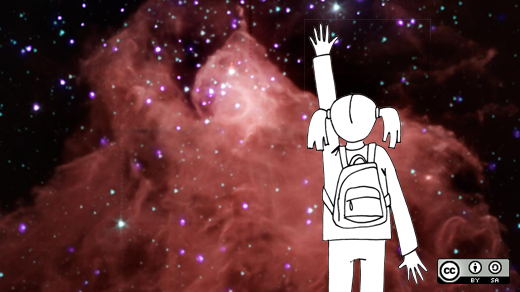One of the presentations I'm most looking forward at this year's OSCON is Jennifer Tong and Wilfred Gee's session, PANOPTES: Open source planet discovery.
In recent years, astronomers have discovered many planets orbiting other stars. The PANOPTES project aims to put the science and tools necessary for this work in the hands of ordinary folk and crowdsource the discovery of new planets! I had a short Q&A with Wilfred about the project.

What motivated you to create PANOPTES?
Astronomers use something called "etendue" to measure the effectiveness of a telescope at surveying large swaths of the night sky. Etendue is simply the product of the aperture of the telescope (how much light it gathers) and the field of view (how much of the sky it sees at one time). Typically one achieves a large etendue by building a larger telescope (to collect more light, thus requiring shorter exposure times) or by using a larger detector (to see more of the sky in each image). Both of these options are expensive.
PANOPTES founder Olivier Guyon realized that the most cost effective way to maximize the etendue-per-dollar was to use low-cost, commercial, off-the-shelf parts and maximize the number of telescopes being used. More telescopes means more night sky, and more night sky means more potential exoplanet discoveries.
Using numerous low-cost telescopes rather than a small number of expensive ones also opens up participation in the project to citizen scientists and simultaneously allows the project to distribute telescopes across the globe, insulating data collection from bad weather at any one site.
If an amateur astronomer decides to build one of these stations and participate, what would they do with any potential hits they find?
This is where the distributed nature of PANOPTES really comes into play. While there is often a lot of excitement about the concept of an individual discovering an exoplanet, PANOPTES is best thought of as one giant collection device that is spread across the planet with a large team of citizen scientists contributing to each discovery. While an individual participant might contribute to a particular discovery, the discovery would likely not have happened unless many team members were also observing that particular star at many times throughout the year.
For example, on the Keck telescope on Mauna Kea, there are 36 individual mirror segments that are tiled together to make up the telescope's light-collecting area. For the Thirty Meter Telescope (TMT) proposed for the early 2020s, there will be almost 500 mirror segments to make a mirror nearly 10 times larger than Keck's. For PANOPTES, each individual unit can be thought of as an individual mirror segment connected over the Internet with cloud computing. Just as we wouldn't talk about one segment on Keck discovering an exoplanet by itself, we think of each unit as contributing to the whole.
What makes the project interesting is that each unit can be used individually if the owner so desires. So while the unit will operate in an autonomous way if left on its own, it is also possible to manually control a unit. For example, if an educator is doing a lesson on the Messier objects or a visible comet, they could use the PANOPTES unit to control and capture images of whatever they were interested in.
How did the initial project members connect?
Several of the initial members (including project founder Olivier Guyon) were either working at one of the large astronomical telescopes on Mauna Kea, or were amateur astronomers on the Big Island. We've now had contributions from members in several countries across the globe.
What would motivate someone to join in? Who is your ideal team member?
While our eventual goal is for the project to be accessible to school groups, our initial need is for team members who are technically proficient and can contribute to project development through writing code, improving hardware or electronic design, or helping write documentation and tutorials. As the project develops, however, we will need to reach out to schools and other groups, so we will be looking for contributors who have an interest in outreach and education to help coach school groups or to work with teachers to develop lesson plans.
To make it accessible to school groups or clubs, the total cost of the unit is kept under $5,000 USD, which contains everything a group or individual might need to build a unit and start contributing to the network.
Because we also view PANOPTES as a very effective outreach and education tool, our primary audience is interested high school and amateur groups acting under the supervision of teachers or community educators. We envision a classroom (or robotics or computer science club) raising the individual funds for the kit and then pairing with an interested, and perhaps more technical, member of the community who could help guide the building process.
The motivation comes from the very real desire for the public to be able to contribute to the scientific process. While large projects such as TMT or the James Webb Space Telescope are great, the reality is that very few individuals will have the opportunity to work hands-on with the science. While it is true that more and more data is becoming available for interested individuals to work with, what makes PANOPTES different is that it involves citizen scientists in the construction, refinement, and collection of the data.
Existing citizen science projects such as Galaxy Zoo or Planet Hunters have paved the way for PANOPTES, but still only allow for the public to participate in data analysis. PANOPTES looks to enable public participation in all aspects of the project, from design and implementation to data collection and analysis.
How much support have you had from the science community on this? Are the larger observatories and exoplanet projects interested?
Quite a bit. The concept is not only viable, but is just the kind of out-of-the box thinking that many individuals in the community support. NASA JPL has taken an interest in the project and has awarded us a five-year contract to support the project's development. We have also seen a lot of interest from undergraduate students at numerous international universities. Because the "buy-in" is cheap and the educational and scientific payoff is large, the project attracts a wide range of interested individuals.







2 Comments